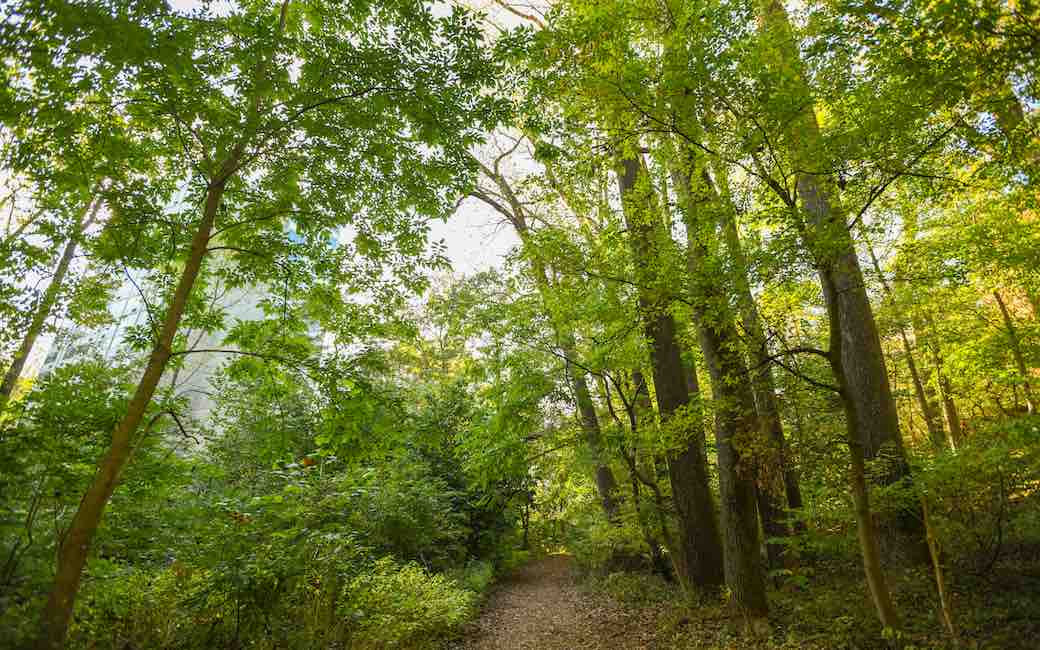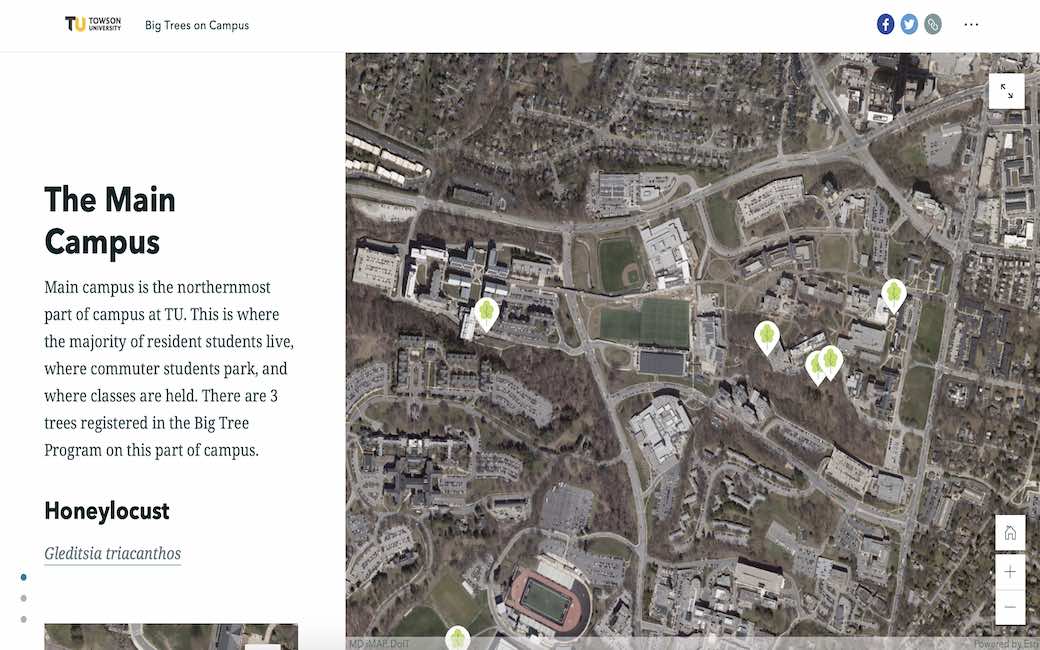Campus observes Earth Week, digitally
With an online map of "Big Trees" on campus and other events, the Office of Sustainability celebrated Earth Week online
By Cody Boteler on April 23, 2020

Sustainability is always in focus at Towson University, and that’s especially true during Earth Week, an annual event when the TU community discusses environmental issues and rededicates itself to green initiatives.
This year, it kicked off with a digital chat hosted by the TU Eco-Reps, the Office of Sustainability and the Office of Civic Engagement and Social Responsibility. Participants discussed how to observe the 50th anniversary of Earth Day and build a more sustainable future from home.
On Arbor Day, observed Friday, TU gets a new gift from the Office of Sustainability—with help from Landscape Services and the Glen Arboretum—an online map of the big trees on campus.
So-called big trees have been celebrated and recorded in Maryland since at least 1925. James Hull, director of the Glen Arboretum and professor emeritus in the Department of Biological Sciences, says they are important because they provide a variety of ecological benefits essential to human existence.
But, he says, there’s also a deeper meaning one can experience when paying attention to large, old trees.
“Those trees have, within their rings, a history of the region. That just kind of speaks to me,” Hull says. “These trees were standing during the last pandemic we had. They have endured; they give us perspective.”
TU has 13 big trees registered, spread between the central campus, West Village, the Glen and South Campus, near SECU Arena and Johnny Unitas® Stadium.
The interactive online map allows a user to tap or click on a tree to see photos of it and learn more about it. For example, clicking on a tree icon near Newell Dining Hall, a user can learn that it is a honeylocust, or Gleditsia triacanthos, and that it stands 86 feet tall and has a circumference of 126 inches.

The map was created with geographic information sciences (GIS), an emerging realm of worldwide study. Students at TU can minor in GIS to learn increasingly in-demand skills, like handling geographical information and providing technological expertise with GIS programs.
The TU Geography Society, a student social-academic club, offers students a way to meet others with similar interests and engage with professors outside of the classroom.
“When the community can see how special these trees are, there will be a greater appreciation and a greater interest in protecting them,” says Paddy Watson, assistant director of the Office of Sustainability.
“ It’s nice to have those little areas that you can go and have a seat outside and enjoy nature ”
Several of the trees are champions, meaning they’re either the tallest in Baltimore County or the tallest in the state of that species.
Landscape Services Manager Donna Anderson, along with Landscape Technician Teresa Westhead, worked to register the big trees on campus with the state.
Anderson says the big trees create a lot of benefits for campus, including cleaning the air, slowing erosion and providing habitats for wildlife.
“It’s nice to have those little areas that you can go and have a seat outside and enjoy nature,” Anderson says.
Students can get their hands in the dirt, too. Anderson’s department is always taking volunteers to clear vines or plant trees.
The best way for students to learn more about volunteering with Landscape Services is to email Anderson.
Anderson agrees with Hull: There are benefits to having big trees on campus that go beyond the environmental and ecological.
“The large trees have been here for a long time, 80 years or more,” she says. “It’s part of our heritage. It’s important that students, faculty and staff know this campus has stood strong for that many years.”